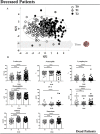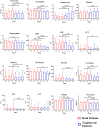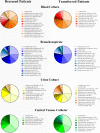The impact of the secondary infections in ICU patients affected by COVID-19 during three different phases of the SARS-CoV-2 pandemic
- PMID: 36459278
- PMCID: PMC9717567
- DOI: 10.1007/s10238-022-00959-1
The impact of the secondary infections in ICU patients affected by COVID-19 during three different phases of the SARS-CoV-2 pandemic
Abstract
Microbial secondary infections can contribute to an increase in the risk of mortality in COVID-19 patients, particularly in case of severe diseases. In this study, we collected and evaluated the clinical, laboratory and microbiological data of COVID-19 critical ill patients requiring intensive care (ICU) to evaluate the significance and the prognostic value of these parameters. One hundred seventy-eight ICU patients with severe COVID-19, hospitalized at the S. Francesco Hospital of Nuoro (Italy) in the period from March 2020 to May 2021, were enrolled in this study. Clinical data and microbiological results were collected. Blood chemistry parameters, relative to three different time points, were analyzed through multivariate and univariate statistical approaches. Seventy-four percent of the ICU COVID-19 patients had a negative outcome, while 26% had a favorable prognosis. A correlation between the laboratory parameters and days of hospitalization of the patients was observed with significant differences between the two groups. Moreover, Staphylococcus aureus, Enterococcus faecalis, Candida spp, Pseudomonas aeruginosa and Klebsiella pneumoniae were the most frequently isolated microorganisms from all clinical specimens. Secondary infections play an important role in the clinical outcome. The analysis of the blood chemistry tests was found useful in monitoring the progression of COVID-19.
Keywords: Blood chemistry parameters; COVID-19; Clinical outcome; Microbiological data; SARS-COV-2 infection; Secondary infections.
© 2022. The Author(s), under exclusive licence to Springer Nature Switzerland AG.
Conflict of interest statement
The authors declare no competing interests.
Figures






References
MeSH terms
LinkOut - more resources
Full Text Sources
Medical
Miscellaneous

